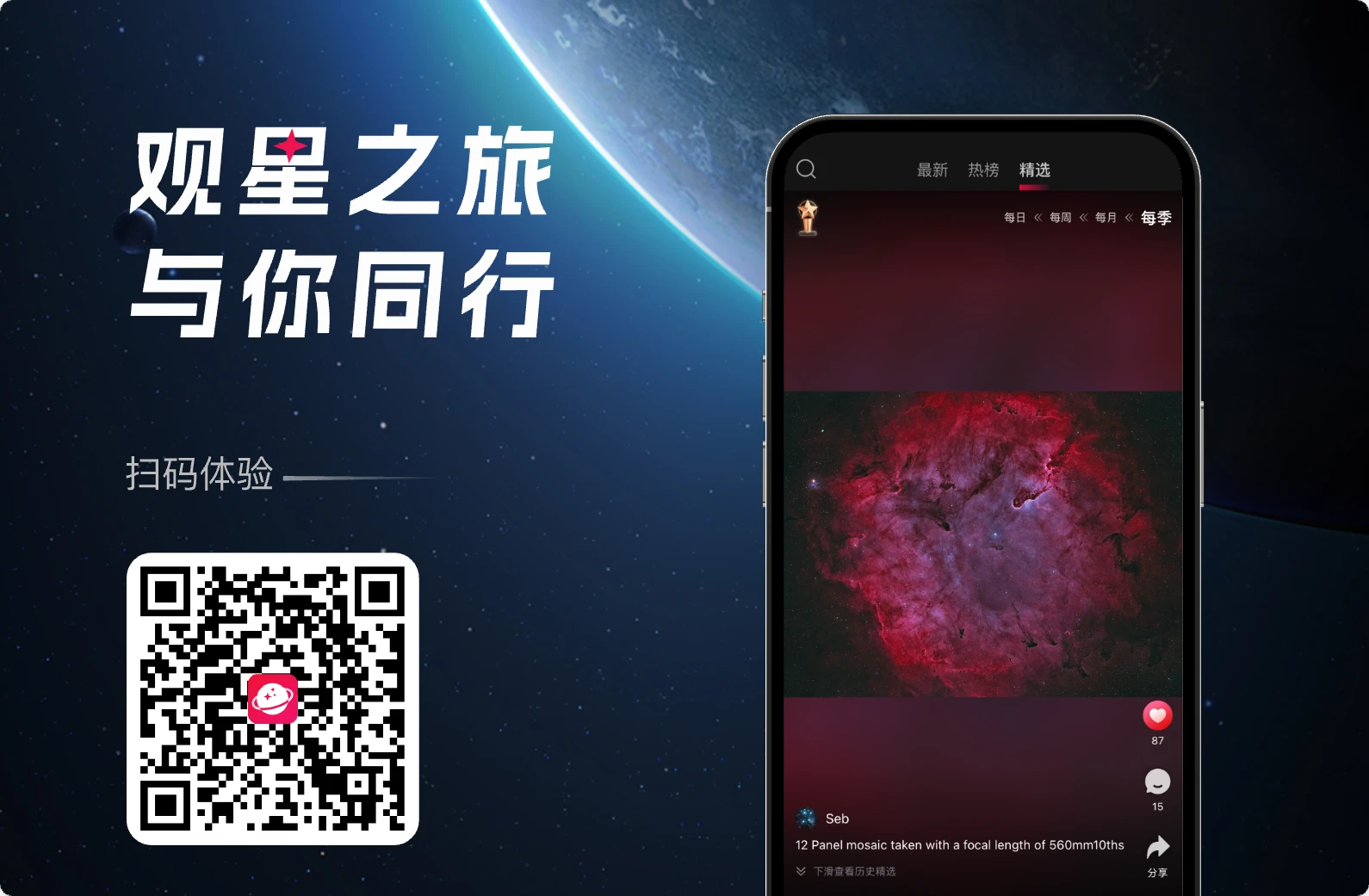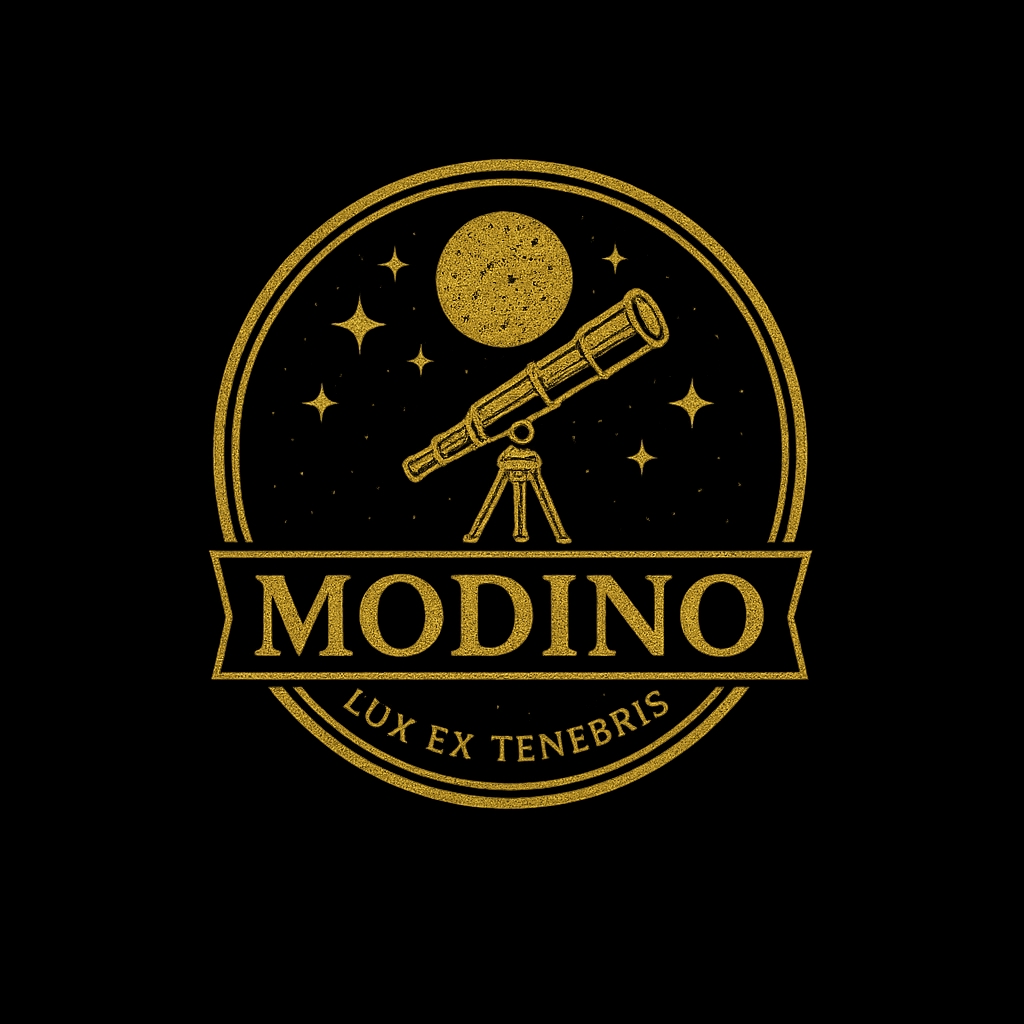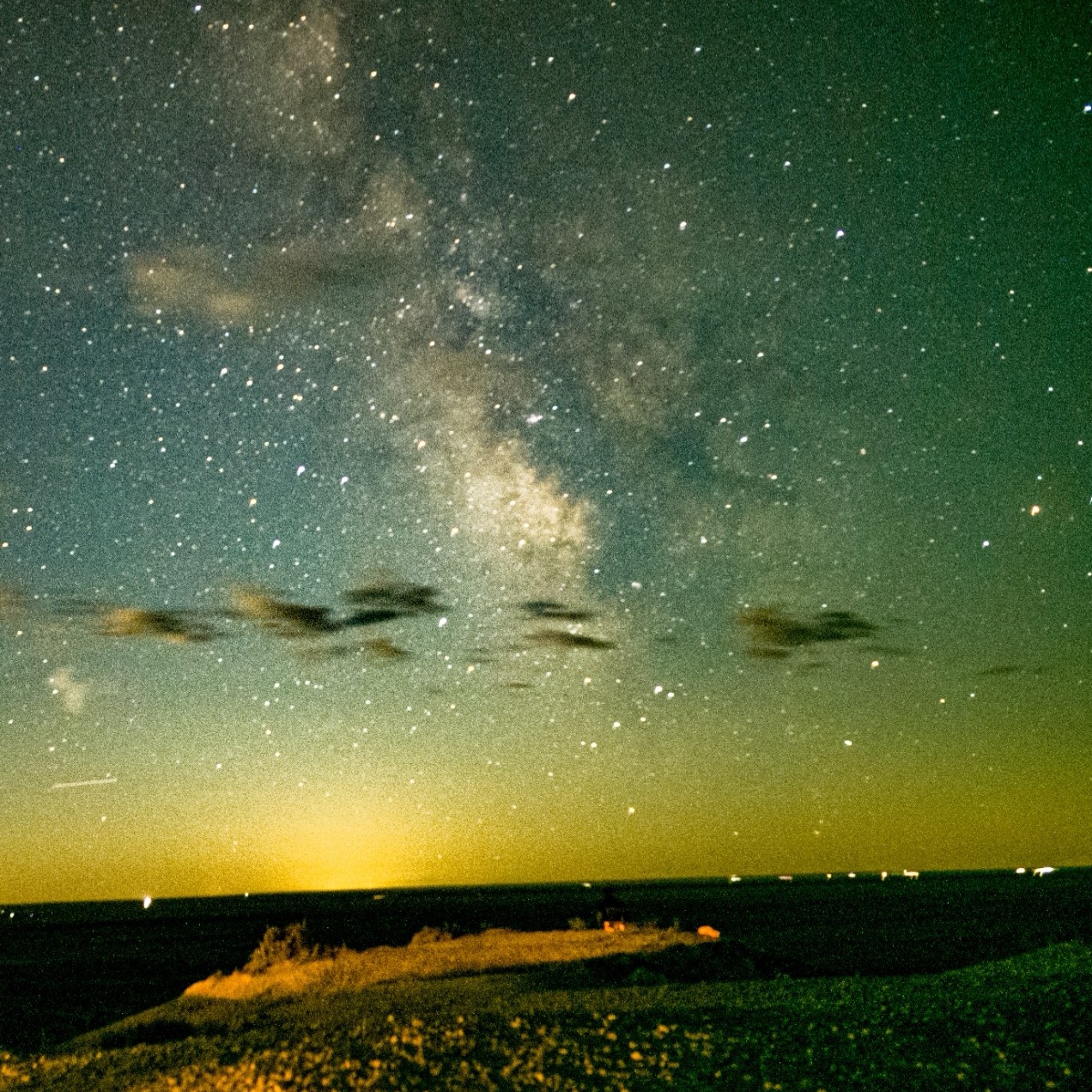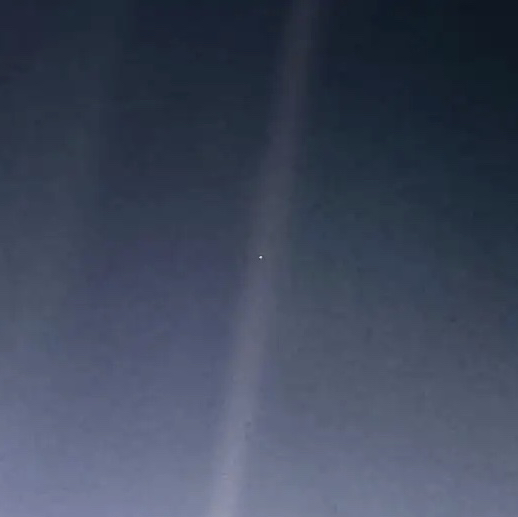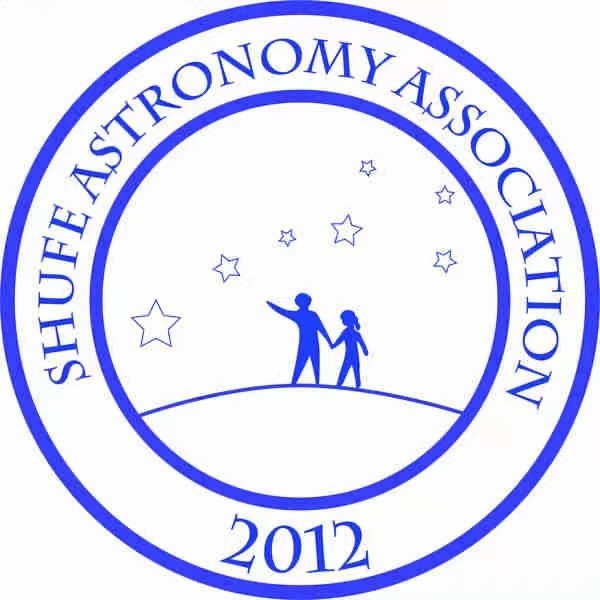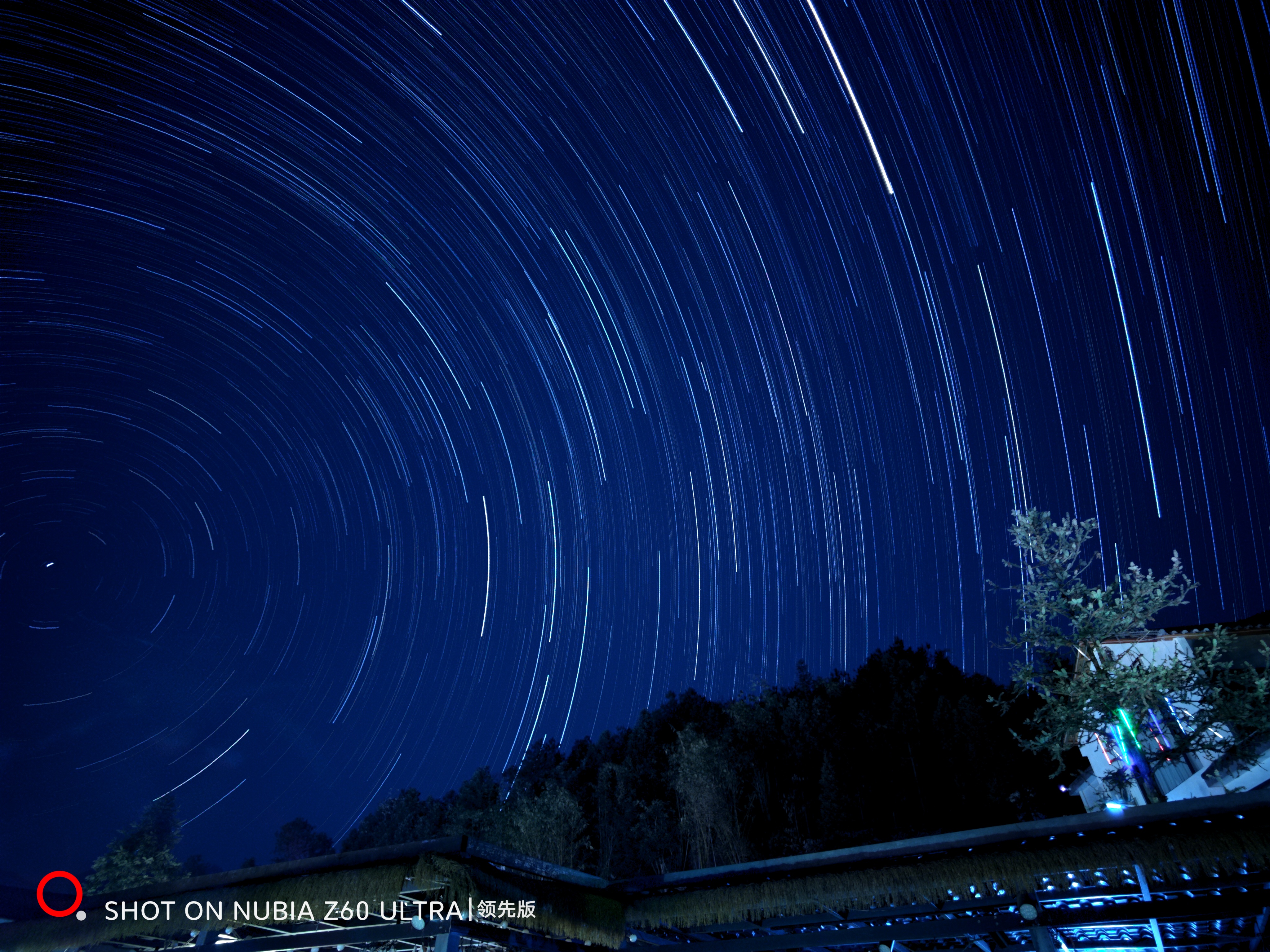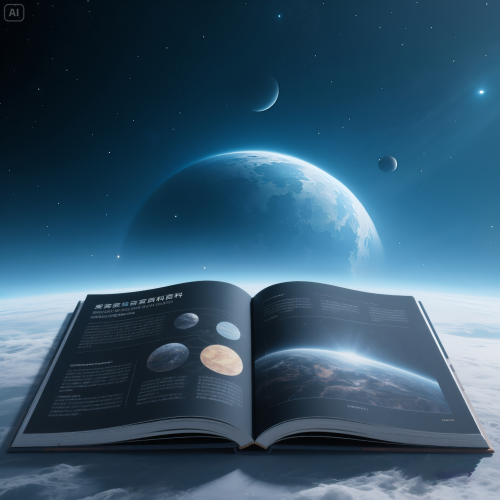

天文知识百科
发布帖子
Rubén Modino
El telescopio James Webb podría haber encontrado algo increíble: el objeto que todos los astrónomos del mundo han estado buscando.
Este misterioso hallazgo, bautizado como “Capotauro”, podría ser la galaxia más antigua jamás vista. Su luz habría comenzado a viajar apenas 90 millones de años después del Big Bang, cuando el universo apenas “acababa de nacer”. Imagina mirar tan lejos que ves el pasado mismo del cosmos… eso es lo que el James Webb podría haber logrado. Pero aquí viene lo más sorprendente: los científicos aún no saben exactamente qué es Capotauro. Podría ser una galaxia tan temprana que desafía todo lo que creíamos saber sobre la formación del universo. También podría ser una galaxia más cercana y cubierta de polvo, que confunde a los telescopios… o incluso un objeto dentro de nuestra propia Vía Láctea, como una estrella fallida o un planeta errante. Y hay una posibilidad aún más misteriosa: que sea un agujero negro gigante oculto tras una nube de gas brillante. El equipo del James Webb ya está analizando su luz con todo detalle para descubrir su verdadera naturaleza. Si se confirma que Capotauro es una de las primeras galaxias del universo, ¡habría que reescribir parte de la historia cósmica! Este descubrimiento no solo nos enseña sobre el pasado del universo, sino también sobre nosotros mismos: cómo, a partir del polvo y la oscuridad, surgieron las primeras estrellas, galaxias… y eventualmente, la vida. El universo aún guarda secretos que esperan ser descubiertos. Y gracias al James Webb, estamos un poco más cerca de entender nuestros orígenes entre las estrellas.
Rubén Modino
La NASA descubre una “química imposible” en una luna de Saturno
A más de mil millones de kilómetros del Sol, en el helado mundo de Titán, la mayor luna de Saturno, la NASA ha encontrado algo que desafía nuestras reglas básicas de la química. Allí, en un paisaje con mares de metano líquido y temperaturas cercanas a los –180 °C, se forman estructuras moleculares que en la Tierra serían imposibles. El hallazgo revela que el ácido cianhídrico (HCN) —una molécula clave en los procesos que podrían originar la vida— puede combinarse con metano o etano, formando “co-cristales”: sólidos en los que distintas moléculas se enlazan sin destruirse entre sí. Esto rompe el principio de que lo “polar” solo se mezcla con lo “polar” y lo “no polar” con lo “no polar”. En Titán, esas reglas parecen no aplicar. ¿Por qué es tan importante? Porque estos co-cristales podrían ser los cimientos de una química prebiótica, es decir, una química anterior a la vida, en entornos completamente diferentes al nuestro. Si reacciones así pueden ocurrir en un mundo sin agua líquida, quizás la vida —o algo parecido— pueda surgir en lugares mucho más fríos y extraños de lo que imaginamos. Este descubrimiento impulsa a los científicos a replantearse cómo y dónde buscar vida más allá de la Tierra. Misiones futuras, como Dragonfly, que la NASA lanzará hacia Titán en la próxima década, podrían confirmar si estas mezclas realmente ocurren sobre su superficie. Como señaló uno de los investigadores, no se trata de reescribir todos los libros de química, sino de ampliar sus fronteras. Porque a veces, los secretos del universo se esconden en lo que creíamos imposible.
Rubén Modino
Un planeta errante que desafía las leyes del cosmos
El universo acaba de sorprendernos con un hallazgo que parece sacado de la ciencia ficción. Astrónomos de varios países han detectado un planeta “errante”, es decir, que no orbita ninguna estrella, que crece a un ritmo récord: seis mil millones de toneladas por segundo. El objeto, llamado Cha 1107-7626, se encuentra a unos 620 años luz de la Tierra, y está rodeado por un disco de gas y polvo que lo está alimentando como si fuera una estrella joven. En agosto de 2025 su ritmo de crecimiento se disparó, multiplicándose por ocho en apenas unas semanas, un fenómeno jamás observado en un cuerpo de masa planetaria. Durante ese estallido, los científicos detectaron vapor de agua y posibles campos magnéticos canalizando el material hacia su superficie, algo más propio del nacimiento de una estrella que de un planeta. El desconcierto ha sido total: ¿cómo puede un planeta sin estrella seguir creciendo? Hasta ahora se creía que los planetas errantes eran mundos muertos, expulsados de sus sistemas solares y condenados a vagar en la oscuridad. Pero este descubrimiento cambia las reglas. Cha 1107-7626 podría ser una nueva clase de objeto intermedio, un híbrido entre planeta y estrella, que obliga a replantear cómo se forman los cuerpos celestes. El hallazgo sugiere que algunos planetas errantes podrían “autogenerarse” a partir del material interestelar, sin necesidad de una estrella que los guíe. Una posibilidad tan fascinante como inquietante. El cosmos sigue recordándonos que apenas entendemos una mínima parte de su complejidad. Y, a veces, los mayores misterios no orbitan ninguna estrella: flotan solos, creciendo en silencio, en la inmensidad del espacio.
Rubén Modino
Las Oriónidas iluminan el cielo de octubre Una cita con el cometa Halley visible desde Cantabria
Desde Astrosantander te invitamos a disfrutar de uno de los espectáculos más hermosos del otoño: la lluvia de estrellas Oriónidas, activa hasta el 7 de noviembre, con su punto máximo en la noche del 20 al 21 de octubre. Estas fugaces luces son restos del famoso cometa Halley, que al entrar en nuestra atmósfera se desintegran a gran velocidad, creando destellos que cruzan el cielo a más de 60 km por segundo. Este año tendremos una Luna nueva, lo que significa un cielo oscuro perfecto para observarlas. Desde Liérganes, el entorno ofrece un cielo de buena calidad si te alejas del núcleo urbano, con horizontes despejados hacia el este y sureste, justo donde la constelación de Orión hace su aparición pasada la medianoche. En la zona del Pendo, en Camargo, la contaminación lumínica es mayor, pero aún se pueden disfrutar si se busca un punto elevado o una zona apartada del alumbrado directo. Consejos para disfrutarlo: Busca un lugar oscuro, sin farolas ni luces directas. No necesitas telescopio; a simple vista verás más. Deja que tus ojos se acostumbren a la oscuridad unos 15 minutos. Lleva abrigo, una tumbona o manta, y mira hacia el cielo con paciencia. Durante el máximo podrás ver hasta 20 meteoros por hora, brillando desde la constelación de Orión, el cazador, que asoma sobre el horizonte oriental pasada la medianoche. Cada destello es un saludo del mítico Halley, un visitante que solo vemos cada 76 años, pero que deja su rastro en forma de estrellas fugaces para recordarnos que el cielo nunca se olvida de nosotros.
Rubén Modino
¿Y si Urano y Neptuno no fueran realmente “gigantes de hielo”?
Durante más de treinta años, la NASA y la comunidad científica han descrito a Urano y Neptuno como los “gigantes de hielo” del sistema solar. Sin embargo, un nuevo estudio podría cambiar todo lo que creíamos sobre estos mundos distantes. Los científicos han realizado miles de simulaciones con diferentes proporciones de roca, agua y gas, sin dar por hecho lo que se pensaba desde las misiones Voyager. Los resultados son sorprendentes: es posible que Urano y Neptuno no estén formados principalmente por hielos, sino que contengan mucha más roca de lo que se creía. En algunos modelos, Urano aparece como un planeta casi completamente acuoso; en otros, como un mundo dominado por materiales rocosos. Lo mismo ocurre con Neptuno: podría tener más agua que roca o justo lo contrario. Estas variaciones cambian por completo la manera en que entendemos sus campos magnéticos, uno de los mayores misterios del sistema solar, ya que dependen de qué materiales pueden conducir electricidad en su interior. Si este hallazgo se confirma, tendríamos que reescribir los modelos sobre cómo se formaron los planetas exteriores. Y con ello, también nuestra visión del propio sistema solar. La idea de que Urano y Neptuno son “gemelos helados” podría ser un error de más de 30 años. Para resolver el enigma, los científicos reclaman una nueva misión espacial que estudie estos planetas de cerca. Solo una sonda que analice su composición, densidad y atmósfera podrá revelar qué esconden realmente en sus profundidades. Hasta entonces, Urano y Neptuno seguirán siendo los grandes desconocidos que orbitan en las fronteras heladas de nuestro vecindario cósmico.
Rubén Modino
¿Un NUEVO PLANETA en nuestro sistema solar?
Sí, lo que acabás de leer podría cambiar todo lo que sabemos sobre el universo. Científicos creen haber encontrado un planeta escondido más allá de Neptuno, tan lejano y misterioso que ni los telescopios más potentes logran verlo directo. Lo llaman el Planeta 9, aunque algunos lo apodan “el fantasma del sistema solar”. Se estima que podría ser 5 a 7 veces más grande que la Tierra, y que su fuerza gravitacional estaría alterando las órbitas de otros cuerpos celestes lejanos. En otras palabras: algo enorme está tirando de los planetas allá afuera… y recién estamos notando su huella. Pero acá viene lo más loco: algunos científicos creen que ni siquiera sería un planeta, sino un agujero negro diminuto perdido entre las sombras del espacio. El misterio sigue abierto, pero una cosa es segura: el borde de nuestro sistema solar guarda secretos que podrían reescribir la historia de la astronomía. ¿Y si el noveno planeta ya nos está observando… sin que podamos verlo?
Rubén Modino
El cometa C/2025 A6 Lemmon: un espectáculo que podrás ver desde España
El cometa C/2025 A6 Lemmon se está acercando a la Tierra y promete ser uno de los espectáculos más bonitos del año. Descubierto a comienzos de 2025, este cometa ha ido ganando brillo rápidamente y podría verse a simple vista entre finales de octubre y principios de noviembre. Cuándo y cómo verlo Máximo acercamiento a la Tierra: 21 de octubre de 2025 Punto más cercano al Sol (perihelio): 8 de noviembre de 2025 Mejor momento para observarlo: justo después del atardecer, mirando hacia el oeste-noroeste Desde España y América Latina será visible al anochecer. Si estás en una ciudad como Santander, Madrid o Barcelona, busca un lugar alejado de las luces —por ejemplo, una playa, montaña o zona rural— para disfrutarlo mejor. Qué esperar El cometa podría alcanzar una magnitud 2, lo que significa que podría verse sin telescopio si el cielo está oscuro. Aun así, unos binoculares o un telescopio pequeño permitirán apreciar su color verdoso y su cola brillante. Programas como Stellarium o TheSkyLive te ayudarán a saber la posición exacta del cometa según tu ubicación.
Rubén Modino
Lluvia de Meteoros Dracónidas 2025: un espectáculo en el cielo del norte
Este octubre, el cielo del norte de España nos sorprenderá con una de las lluvias de estrellas más bonitas del año: las Dracónidas. Si el tiempo acompaña, podremos ver decenas, incluso cientos, de meteoros por hora. Las Dracónidas ocurren cuando la Tierra cruza los restos del cometa 21P/Giacobini-Zinner. Al entrar estos fragmentos en la atmósfera, se encienden y crean las luces fugaces que tanto nos maravillan. Su nombre viene de la constelación Draco (El Dragón), de donde parecen salir los meteoros. Cuándo verlas: del 6 al 10 de octubre de 2025, con el punto máximo la noche del 8 al 9, entre medianoche y las 2:00 a.m.. Durante esas horas, se espera una actividad de 150 a 400 meteoros por hora, un evento que no se repetirá con tanta fuerza hasta 2078. Este año coincide con la Superluna de Cosecha, más brillante y grande de lo habitual, lo que puede dificultar ver los meteoros más débiles. Por eso se recomienda observar antes de la medianoche, cuando el cielo aún conserva oscuridad. En Cantabria, mira hacia el norte o noroeste, buscando la constelación del Dragón, entre la Osa Mayor y la Osa Menor. Algunos lugares ideales para disfrutarla: Costa Quebrada, Peña Cabarga, Fuente Dé o el Alto del Soplao. Consejos útiles: Evita luces y pantallas al menos 20 minutos antes para que tus ojos se adapten. No uses telescopios: se disfrutan mejor a simple vista. Lleva ropa abrigada, manta o tumbona. Sé paciente: los meteoros aparecen en rachas. En resumen: 📅 8–9 de octubre | 🕛 medianoche a 2:00 | 🌕 Superluna de Cosecha | 💫 hasta 400 meteoros/hora La lluvia de las Dracónidas es una ocasión perfecta para conectar con el cielo y con la naturaleza. Apaga las luces, busca un rincón oscuro y deja que el universo te regale una noche inolvidable.
Rubén Modino
¡La Tierra tiene una “nueva luna”! (Bueno… casi)
Hace poco, los astrónomos descubrieron un curioso compañero que viaja junto a nuestro planeta. Se llama 2025 PN7, y aunque parece una mini luna, en realidad es lo que se conoce como un cuasi-satélite. Fue detectado el 2 de agosto de 2025 por el telescopio Pan-STARRS en Hawái. Después, los científicos revisaron observaciones pasadas y descubrieron que este pequeño asteroide —de unos 19 metros de diámetro, más o menos el tamaño de una piscina— lleva más de 60 años acompañándonos en su recorrido alrededor del Sol. Lo interesante es que no gira alrededor de la Tierra, sino del Sol, pero su órbita está tan sincronizada con la nuestra que parece que nos sigue como un fiel compañero cósmico. Por eso se le llama “cuasi-satélite”: va casi a nuestro ritmo, pero no está atrapado por nuestra gravedad como la Luna real. Los expertos creen que seguirá viajando junto a nosotros al menos otras seis décadas, antes de tomar un rumbo diferente. Así que, por ahora, podemos decir que la Tierra tiene una “nueva luna temporal”, una especie de vecina cósmica que nos acompaña en nuestro viaje por el espacio.
DustWonder
转载一下我在另一个app写的一篇科普文
《伽利略的故事》 一:人物简介(1)基本信息-1-姓名:伽利略·伽利莱-2-出生日期:1564年2月15日-3-去世日期:1642年1月8日-4-国籍:意大利-5-职业:天文学家、物理学家和工程师-6-后人评价:欧洲近代自然科学的创始人,“观测天文学之父”、“现代物理学之父”、“科学方法之父”、“现代科学之父”(2)关于伽利略的一些事实-1-伽利略大学未毕业最初,他的父亲送他去比萨大学学习医学,但伽利略对数学产生了兴趣,并最终未获得学位就离开了大学。哈哈,兴趣是最好的老师呀。-2-伽利略的中指被收藏在博物馆中在这位科学家去世约一个世纪后,他右手的中指被从遗体中取出,并先后存放在意大利的多个博物馆中。(emmm……一言难尽啊……)-3-伽利略晚年被软禁伽利略对日心说的支持使他与天主教会发生了直接冲突。作为惩罚,他最初被判终身监禁,随后改为软禁。(见后文)-4-伽利略在去世前四年完全失明与流行的说法不同,伽利略的失明并非由他观察太阳造成。最可能的原因是白内障或青光眼。因为在没有任何防护措施的情况下观测太阳会立刻失明,而不是像慢性病一样。——————二:科学发现(1)物理学-1-自由落体定律这个定律的意思是,在空气阻力可以忽略不计的情况下,物体的下落速度不会受到质量的影响。(安全警告:严禁模仿!!高空抛物违法犯罪!!!)-2-单摆运动的基本原理单摆运动的基本原理(又称伽利略单摆定律)表明,单摆的摆动遵循稳定、重复的模式,它的周期(完成一次完整摆动的时间)仅取决于摆长和重力加速度。这一发现为精确计时仪器(如摆钟)的发展奠定了基础,同时加深了人们对运动规律和振动系统的理解。据说这是因为年轻时的伽利略观察吊灯时发现的。-3-抛物线运动理论伽利略的抛物线运动理论(又称抛射体定律)指出,在重力作用下,抛射体的运动轨迹是抛物线。他证明了抛射体的水平运动和垂直运动可以分别描述,并最终得出其轨迹是抛物线。这一理论是理解物体运动的关键,为牛顿的运动定律铺平了道路。至今,伽利略的理论仍用于解释卫星轨道、体育运动中的投掷物、导弹轨迹等各种抛射运动。(2)天文学-1-月球上的陨石坑与山脉当伽利略把他的原始的天文望远镜对准月球时,他发现月球不是一个光滑无暇的球体,而是坑坑洼洼的,那些就是陨石坑与山脉。这颠覆了人们几个世纪以来的传统观念。-2-金星的相位伽利略还利用天文望远镜观测过金星,并且发现了金星的相位变化。换句话说,金星跟月球一样,也会有月相,你可以叫它“金相”。这是支持日心说的关键证据——金星是围绕太阳运转的,而不是地球。-3-木星的四颗最大卫星1610年,伽利略观察到了木星周围有一些不同寻常的小天体。它们不像是行星的背景恒星,因为它们的运行规律实在是太奇怪了。他连续几个晚上观测这些奇怪的天体,最后他发现,这些天体是木星的卫星,所以这4颗木星最大的卫星又被称为“伽利略卫星”。这又证伪了地心说,因为木星的卫星是围绕木星运转的,而不是地球。-4-银河系的恒星伽利略充分利用了他的望远镜,当他把望远镜对准横跨夜空的璀璨银河时,他震惊的发现:银河不是人们长久以来认为的一条模糊的云雾状条带,而是无数颗恒星。从某种意义上来说,他是第一个明白了银河系的本质(物理意义,不是哲学意义)的人。-5-太阳黑子太阳黑子是太阳表面温度较低的区域。虽然两千多年前的中国天文观测者就发现了这一特征(他们在日落时看到了太阳表面的黑色斑点。注意!不要尝试这么做,否则你有可能失明!如果你不得不这么做,一定要注意此时的太阳必须是深橙色的!),但它从未被仔细研究。后来,伽利略利用自己的望远镜观测太阳,发现了太阳黑子。(我不知道他有没有做好防护措施……)-6-月球的天平动伽利略研究了月球的天平动,即月球在天空中微小的摆动。他通过望远镜仔细观察月球,并绘制了详尽的图像,首次认识到月球天平动是由地球视角的变化和月球自转的方向所导致的。这进一步推动了日心说的科学发展。——————四:伽利略晚年为何被软禁至死?照理来说,伽利略这么聪明,晚年应该很幸福才对。但他为什么会被教廷软禁直到去世呢?其实啊,当时的统治者不学无术,盲目崇信《圣经》,倔强地维护“地球是宇宙中心,天体完美无瑕”的错误理论,并且封杀一切不同的声音,懦弱至极。伽利略33岁时,了解到了(注意不是发现!)日心说,随后在公共场合进行了很多次演讲。但是愚昧的教会不支持他的行为。后来,人多势众的反对集体强烈要求教廷制裁伽利略,这位坚守科学的老人不得不奔赴罗马。教皇保罗五世下达了禁止伽利略捍卫日心说的条令,于是伽利略与罗马教会第一场针锋相对的斗争以失败告终。1624年,伽利略的老朋友乌尔邦八世出任罗马教廷的教皇,伽利略的内心再度燃起希望。本以为老朋友可以与他坐下来好好谈谈,理解他对于日心说的详细解释,以维护科学的名誉。但六次的拜访最终都变成了徒劳无功,乌尔邦八世宛如变了一个人一般,坚持不改变禁令。于是,伽利略再次落寞地离开了罗马,这一次挫败的不仅是他对于科学捍卫的信心,还让他对于友情产生了质疑。1632年,《关于托勒密和哥白尼两大世界体系对话》出版。在这本书中,伽利略继续隐晦地表达着自己对日心说的支持,并且更加隐晦地嘲讽教会的固步自封。这次,伽利略算是真惹怒了教廷了。1633年,教廷要求他在这年冬天立刻前往罗马,而等待着他的,将是人类历史上最严酷的惩罚。严厉的审讯开始了,教会一次又一次把伽利略押上法庭,接连审了几个月,伽利略都不肯认罪。教皇乌尔邦大怒,下令对伽利略采用“维里亚”刑讯,换句话说就是不让睡觉。法官们每隔4小时换一次班, 而伽利略却得不到喘息的机会。这样的“车轮大战”持续了50多小时,已是风烛残年的伽利略实在坚持不住了。教廷给他的惩罚是跪下朗读一份忏悔书。听起来很简单。其实,比起这忏悔书的内容,跪下的惩罚简直微不足道。这份忏悔书要求伽利略亲口否认自己的学说,这是它的部分内容:“我,伽利略,现年70岁,亲临法庭受审,双膝下跪,两眼注视,双手接触《圣经》,以虔诚的心情宣誓:我违背教义,我诅咒我的罪孽,我悔恨我的过失,宣传地球运动的邪说......我从此不以任何方法、语言或著作,去支持、维护或宣扬地动的邪说。当我听到有谁受异端迷惑或有异端嫌疑时,我保证一定向神圣法庭,宗教裁判员或地点最近的主教报告……”可悲,可怜,又可笑。后来,在伽利略的几个好朋友的劝说下,教廷勉勉强强地允许了伽利略回到自己的故乡,但还是软禁。最后,他在贫病交加中去世,享年77岁。——————他在星空中,比它们在教义中,看到的更多。——————五:迟到的平反直到1992年,教皇约翰·保罗二世才正式宣布伽利略对日心说的支持是正确的,并承认宗教裁判所当年的判决是一个错误。迟到了300多年。——————世界暗无天日,你却一生都在追逐太阳。—————— (正文完) ——————鸣谢:(1)我妈,帮我改排版、标点符号、错别字,提出宝贵的建议,并且稍微修改了一下我那垃圾的文笔。(2)天文软件StarWalk2,给了我写作的灵感和参考。——————
Sufe天文
无奖竞猜 No prize guessing
猜猜这是谁(打一天文探测器) 欢迎评论区留言:) Guess who she is (hint: an astronomical detector). Feel free to leave a comment in the comment section. :)
天文知识馆
2024 YR4:可能撞击地球的小行星 A Potential Earth Impact
2024年12月27日,智利天文台通过“小行星陆地撞击持续警报系统”(ATLAS)首次观测到这颗天体,其轨道与地球交叉,被归类为“阿波罗型近地天体”,它的直径40-90米,2032年12月22日存在撞击地球风险。 On December 27, 2024, the Chilean Observatory first observed this celestial body through the "Asteroid Terrestrial-impact Last Alert System" (ATLAS). Its orbit intersects with Earth, classifying it as an "Apollo-type near-Earth object." With a diameter of 40-90 meters, it poses a risk of impacting Earth on December 22, 2032. 关于 2024 YR4 About 2024 YR4 小行星 2024 YR4 由 ATLAS 望远镜与 2024年12月27日 发现,就在它接近地球的短时间内,当时它正以 830000 公里(约为地月距离的 2.15 倍)的距离略过地球。 Asteroid 2024 YR4 was discovered by the ATLAS telescope on December 27, 2024, during its close approach to Earth. At that time, it passed by Earth at a distance of 830,000 kilometers (approximately 2.15 times the distance between Earth and the Moon). 目前,小行星 2024 YR4 距离地球 4300万 公里,并持续远离中,然而,它的轨道最终将再次接近地球,计算表明,小行星 2024 YR4 有可能在 2032年12月22日 撞击地球,这距离现在仅剩 8 年,在针对这颗小行星计算出的六个可能得撞击日期中,这个日期是时间最近且风险最高的。 Currently, Asteroid 2024 YR4 is 43 million kilometers away from Earth and continues to move further away. However, its orbit will eventually bring it close to Earth again. Calculations indicate that Asteroid 2024 YR4 could potentially impact Earth on December 22, 2032, just eight years from now. Among the six possible impact dates calculated for this asteroid, this date is the nearest and carries the highest risk. 通过科学的计算,这颗小行星的直径估计在 44 - 100 米之间,其大小相当于波音 737 飞机或自由女神像,虽然这个尺寸不足以终结人类文明,但其蕴含的能量,足以摧毁任何一座大型城市。 Scientific estimates suggest that the asteroid's diameter is between 44 and 100 meters, comparable in size to a Boeing 737 aircraft or the Statue of Liberty. While this size is not enough to end human civilization, the energy it carries is sufficient to destroy any major city. 小行星 2024 YR4 有多危险? How Dangerous is Asteroid 2024 YR4? 小行星 2024 YR4 在都灵指数上得分为 3 分(满分10分),这意味着这颗小行星在未来十年内撞击地球的概率为 1% 或更高,但小于 3%,有小概率会造成局部的破坏,由于其存在的风险较高,国际小行星预警网络(IAWN)已于 2025年1月29日 发布了潜在小行星撞击通知,旨在提醒公众和航天机构关注小行星可能的撞击风险,并为进一步观测、风险评估和潜在的应对措施预留时间。 Asteroid 2024 YR4 scores a 3 on the Torino Scale (out of 10), meaning there is a 1% or higher chance of it impacting Earth within the next decade, but less than a 3% chance. There is a small probability that it could cause localized destruction. Due to its relatively high risk, the International Asteroid Warning Network (IAWN) issued a potential asteroid impact notification on January 29, 2025, to alert the public and space agencies to the possible impact risk and to allow time for further observations, risk assessments, and potential mitigation measures. 但不必过于担心,这颗小行星虽然被认为是最危险的小行星之一,但并未被列为“潜在威胁小行星”。 However, there is no need for excessive concern. Although this asteroid is considered one of the most dangerous, it has not been classified as a "potentially hazardous asteroid." 让我们深入了解小行星 2024 YR4 撞击地球可能带来的后果,以及 1% 的撞击概率在天文学上意味着什么。 Let's delve deeper into the potential consequences of Asteroid 2024 YR4 impacting Earth and what a 1% impact probability means in astronomical terms. 根据国际小行星预警网络(IAWN)发布的声明,潜在的撞击风险走廊横跨东太平洋、南美洲北部、大西洋、非洲、阿拉伯海和南亚。这意味着印度、巴基斯坦、孟加拉国、尼日利亚、苏丹、埃塞俄比亚、厄瓜多尔、哥伦比亚和委内瑞拉等人口密集地区可能受到影响。 According to a statement released by the International Asteroid Warning Network (IAWN), the potential impact risk corridor spans the eastern Pacific, northern South America, the Atlantic Ocean, Africa, the Arabian Sea, and South Asia. This means densely populated areas such as India, Pakistan, Bangladesh, Nigeria, Sudan, Ethiopia, Ecuador, Colombia, and Venezuela could be affected. 那么如果其撞击地球,会发生什么?What Would Happen if it Impacts Earth? · 如果假设其实际直径约为50米(接近最低估计值),撞击能量约为8百万吨TNT当量。这场爆炸的威力可能是车里雅宾斯克事件的16倍,当年那场事件的冲击波震碎了7000座建筑物的窗户,并造成1500人受伤。If we assume its actual diameter is about 50 meters (close to the lower estimate), the impact energy would be approximately 8 megatons of TNT. This explosion would be 16 times more powerful than the Chelyabinsk event, whose shockwave shattered windows in 7,000 buildings and injured 1,500 people.· 如果按照最大估计值,即直径100米计算,撞击能量将达到50百万吨TNT当量,大致相当于一枚氢弹爆炸(相当于沙皇炸弹或3333枚“小男孩”原子弹)。If we take the maximum estimate, with a diameter of 100 meters, the impact energy would reach 50 megatons of TNT, roughly equivalent to a hydrogen bomb explosion (similar to the Tsar Bomba or 3,333 "Little Boy" atomic bombs). 撞击区域:那些地方会面临风险?Impact Zones: Which Areas Are at Risk? · 最可能的撞击场景之一是小行星落入海洋(太平洋、大西洋或阿拉伯海)。如果撞击发生在浅海区域,可能会引发几十米高的海啸,对沿海城市造成严重破坏。如果撞击发生在深海区域,海浪会较小,但仍可能扰乱全球航运。One of the most likely scenarios is that the asteroid could fall into an ocean (the Pacific, Atlantic, or Arabian Sea). If the impact occurs in shallow waters, it could trigger a tsunami tens of meters high, causing severe damage to coastal cities. If it occurs in deep waters, the waves would be smaller but could still disrupt global shipping.· 如果撞击发生在人口密集的城市(如孟买、拉各斯或波哥大),冲击波可能会摧毁方圆10-30公里范围内的建筑物,在人口稠密地区造成数十万至数百万人的伤亡。If the impact occurs in a densely populated city (such as Mumbai, Lagos, or Bogotá), the shockwave could destroy buildings within a 10-30 kilometer radius, potentially causing hundreds of thousands to millions of casualties in densely populated areas.· 如果撞击发生在远离大城市的区域,环境影响仍然不容忽视。爆炸可能引发森林大火,冲击波在数百公里范围内都会被感受到。If the impact occurs in a region far from major cities, the environmental impact would still be significant. The explosion could trigger forest fires, and the shockwave would be felt hundreds of kilometers away. 全球各地的天文学家给出的估算结果从 0.5% 到 6% 不等,在 2025年1月,欧洲航天局(ESA)提供的估算值已从 0.99% 上升到 1.32%;目前已升至 2%,NASA目前的估算值为 2.1%,由于观测仍在进行,目前下定论还为时过早。 Astronomers worldwide have provided estimates ranging from 0.5% to 6%. In January 2025, the European Space Agency (ESA) revised its estimate from 0.99% to 1.32%; it has now risen to 2%. NASA's current estimate is 2.1%. As observations are still ongoing, it is too early to draw definitive conclusions. 由于撞击概率前所未有地高(大多数近地小行星的撞击概率低于 0.00001%),而且这颗小行星的尺寸足以造成严重破坏,联合国支持的两个小行星应对组织(国际小行星预警网络(IAWN)和空间任务规划咨询小组(SMPAG))已启动相关应对措施,这两个机构将继续监测小行星,并制定进一步策略,包括可能的航天器偏转任务。 Given the unprecedented high impact probability (most near-Earth asteroids have an impact probability of less than 0.00001%) and the asteroid's size, which is sufficient to cause significant damage, two United Nations-supported asteroid response organizations—the International Asteroid Warning Network (IAWN) and the Space Mission Planning Advisory Group (SMPAG)—have initiated response measures. These agencies will continue to monitor the asteroid and develop further strategies, including potential spacecraft deflection missions. 小行星 2024 YR4 的观测窗口预计将持续到 2025年4月初,也许之后的计算结果会表明 2024 YR4 对地球是安全的,就像之前许多曾被认为会接近地球的小行星一样,到 2029年 初,天文学家将能够使用望远镜重新观测这颗小行星,并进一步修正其轨道,到那时,距离可能的撞击时间仅剩四年,希望这足够让人类制定并实施防御方案。 The observation window for Asteroid 2024 YR4 is expected to last until early April 2025. Subsequent calculations may indicate that 2024 YR4 is safe for Earth, as has been the case with many asteroids previously thought to be approaching Earth. By early 2029, astronomers will be able to re-observe the asteroid using telescopes and further refine its orbit. By then, only four years will remain before the potential impact, hopefully providing enough time for humanity to develop and implement defense plans. 如果你是地球指挥官,你会选择哪种防御方案? If you were the Earth Commander, what defense strategy would you choose? #2024 YR4#
天文知识馆
2025年最亮彗星 C/2024 G3 (ATLAS) 即将到来!
2025年1月,彗星C/2024 G3(ATLAS)将到达近日点。如果它的运气足够好,没有被太阳摧毁,白天甚至可以用肉眼见到它!不过,不要抱太大希望。内容摘自:Starwalk Comet C/2024 G3 (ATLAS) will reach perihelion in January 2025.If it is lucky enough and not destroyed by the sun, it may even be visible to the naked eye during the day!However, don't get your hopes up.Content excerpted from: Starwalk 关于 C/2024 G3(ATLAS)彗星 C/2024 G3(ATLAS)彗星,2024 年 5 月由 ATLAS 天文观测项目发现,通过其轨道判断,它可能是一颗动态的新彗星,意味着它首次进入太阳系内部。 彗星在近日点时通常最亮,因为它们此时距离太阳最近。而 C/2024 G3 彗星将在 2025 年 1 月 13 日达到近日点,此时处于人马座。在那时,它将比水星更接近太阳,仅 0.094 AU,亮度达到 -4 星等。 这意味着它可能会像 2020 年的著名彗星 NEOWISE 那样肉眼可见,然而,目前天文学家对这种可能性持怀疑态度。 Comet C/2024 G3 (ATLAS), discovered by the ATLAS astronomical observation project in May 2024, maybe a dynamic new comet, judging by its orbit. This means it is entering the inner solar system for the first time. Comets are usually brightest at perihelion when they are closest to the Sun. Comet C/2024 G3 will reach perihelion on January 13, 2025, in the constellation Sagittarius. At that time, it will be closer to the Sun than Mercury, at only 0.094 AU, and shine at magnitude -4. This means it may be visible to the naked eye like the famous Comet NEOWISE in 2020, however, astronomers are skeptical about this possibility. C/2024 G3(ATLAS)彗星名称解释:· 字母“C”代表非周期彗星。此类彗星要么仅穿过太阳系一次,要么在200多年内绕太阳公转一圈。· 名称“2024 G3”表明该彗星于2024年4月上半月被发现,是该期间发现的第三颗彗星。· “ATLAS”是指这一发现是由一项名为“小行星陆地撞击持续报警系统”(ATLAS)的天文调查得出的。 Comet C/2024 G3 (ATLAS) Name Explanation:· The letter "C" stands for non-periodic comets. Such comets either pass through the solar system only once or orbit the sun once in more than 200 years.· The name "2024 G3" indicates that the comet was discovered in the first half of April 2024 and is the third comet discovered during this period.· "ATLAS" means that the discovery was made by an astronomical survey called the Asteroid Terrestrial-Impact Alert System (ATLAS). 但是,C/2024 G3(ATLAS)彗星可能无法成功经过近日点,这是一颗擦日彗星,将在近日点时极近的经过太阳,很可能会碎裂或完全蒸发。 即便 C/2024 G3(ATLAS)彗星在近日点幸存下来,此时它的距角(天体和太阳之间的角距离)也只会约为 5 度,这意味着这颗彗星将位于天空中靠近太阳的距离,很难被观测到。 However, Comet C/2024 G3 (ATLAS) may not make it to perihelion, a comet that will pass very close to the Sun at perihelion and will likely break up or evaporate completely. Even if Comet C/2024 G3 (ATLAS) survives perihelion, its epsilon (angular distance between the object and the Sun) will only be about 5 degrees, which means the comet will be very close to the Sun in the sky and difficult to observe. 同时, C/2024 G3(ATLAS)彗星从北半球很难观测到,在南半球,也需要直到近日点后的大约一周,彗星才会在黑暗的天空中出现,那时彗星也会变暗。我们只能希望这颗彗星能够变得更亮,以至于在白天的天空中都能看到它! Meanwhile, Comet C/2024 G3 (ATLAS) will be difficult to see from the Northern Hemisphere, and in the Southern Hemisphere, it will not be visible in dark skies until about a week after perihelion, when it will also be dim. We can only hope that this comet will get brighter enough to be visible in daytime skies! 拍摄 C/2024 G3(ATLAS)彗星 2024 年 12 月 24 日,Martin Mašek 在阿根廷 FRAM 项目的远程望远镜上捕捉到了 C/2024 G3 (ATLAS),海拔仅 4°(离角 19°)。在他的照片中,我们可以看到一个带尾状物的进化对象,亮度为 8.2。 Martin Mašek captured C/2024 G3 (ATLAS) on a remote telescope of the Argentinian FRAM project at an altitude of only 4° (19° off-angle) on December 24, 2024. In his picture, we can see an evolving object with a tail, with a magnitude of 8.2. 与此同时,该彗星也出现在 SOHO 的 SWAN 摄像机的图像中,这意味着 C/2024 G3 尽管已经比地球更接近太阳,但尚未破裂。彗星的绝对星等(6.8)将它置于 Bortle 生存限以上,这意味着它有很好的生存机会。观察 C/2024 G3 (ATLAS) 彗星的条件不会变差,其亮度将继续增加,我们也可以尝试使用Seestar 来追寻彗星的踪迹。 At the same time, the comet also appears in images from SOHO's SWAN camera, which means that C/2024 G3 has not yet broken up despite being closer to the Sun than the Earth.The comet's absolute magnitude (6.8) puts it above the Bortle survival limit, which means it has a good chance of survival.The conditions for observing Comet C/2024 G3 (ATLAS) will not get worse, and its brightness will continue to increase. We can also try to track the comet using Seestar. 进入 Seestar App ,点击星图,进入天体库,搜索 C/2024 G3 (ATLAS) 彗星,即可看到这颗彗星在当前天空中的位置,但北半球的观测条件不佳,很难观测到它,因此我们期待更多来自于南半球的观察。 Enter the Seestar App, click on the SkyAtlas, enter the Objects, search for Comet C/2024 G3 (ATLAS), and you can see the position of this comet in the current sky. However, the observation conditions in the northern hemisphere are poor and it is difficult to observe it, so we look forward to more observations from the southern hemisphere.
天文知识馆
观测 C/2023 A3(紫金山-阿特拉斯 Tsuchinshan-ATLAS)彗星
2024年最美的彗星已经在天空中可见了!目前,南半球的观测者正在欣赏明亮的C/2023 A3(紫金山-阿特拉斯)彗星,很快北半球也能看到它了。 The best comet of 2024 is already visible in the sky! Right now, observers in the Southern Hemisphere are enjoying the brightening Comet C/2023 A3 (Tsuchinshan-ATLAS), and soon it will be visible in the Northern Hemisphere as well. 首先,彗星C/2023 A3(紫金山-阿特拉斯)可能非常明亮,同时预计也会有漂亮的尾巴,C/2023 A3在水星轨道内经过太阳后,其尘埃和冰彗发将变得非常热。冰会蒸发并逸入太空,并带走大量尘埃颗粒,这些尘埃颗粒会延伸成一条长而明亮的尾巴。历史表明,靠近太阳的彗星拥有最令人印象深刻的彗尾,彗星C/2023 A3正是如此! First of all, C/2023 A3 (Tsuchinshan-ATLAS) is likely to be very bright, and a beautiful tail is also expected.After passing by the Sun at a distance similar to Mercury's orbit, C/2023 A3's coma of dust and ice will heat up considerably. As the ice particles evaporate, they will quickly escape into space, taking with them a large amount of dust that will extend into a long, bright tail. As history shows, comets that pass close to the Sun have the most impressive tails, formed soon after being "roasted" by the Sun's heat. And this is the case with comet C/2023 A3! 图片展示了2007年的麦克诺彗星,展示着它美丽的大尾巴。This image shows Comet McNaught in 2007, showing its beautiful tail.(©ESO/Sebastian Deiries) C/2023 A3 (紫金山-阿特拉斯) 彗星现在已在南半球可见!您可以在早晨日出前看到彗星,它位于东方天空的低处。为了获得最佳视野,请使用放大倍数更高的双筒望远镜,例如10x50或12x50,这对于位于地平线上方低处的彗星来说是更好的选择。 Comet C/2023 A3 (Tsuchinshan-ATLAS) is now visible in the Southern Hemisphere! You can see the comet in the morning, low in the eastern sky, just before sunrise. To get the best view, use binoculars with higher magnification, such as 10x50 or 12x50, which are preferable for comets low on the horizon. 这颗彗星的亮度为约4.7等,比预期的要亮,而且每天都在变亮。请记住,当彗星在黑暗的天空中达到约4等时,肉眼就能看到。 The comet has a magnitude of about 4.7, which is brighter than expected, and it is getting brighter each day. Remember, comets can be seen with the naked eye when they reach a magnitude of about 4 in a dark sky. 尽管这颗彗星距离太阳很近(距角≤23°),但许多观测者即使在困难的条件下也能看到这颗彗星。 Even though the comet is close to the Sun (with an elongation of ≤23°), many observers manage to see the comet even under difficult conditions. Every day, new images of C/2023 A3 appear on the Internet. 在北半球,彗星更靠近地平线,由于太阳太亮,很难看到。它将于10月初在北纬地区可见。 In the Northern Hemisphere, the comet is closer to the horizon and hard to see because of the Sun’s brightness. It will become visible in northern latitudes in early October. C/2023 A3(紫金山-阿特拉斯)彗星在2024年能见度预测 C/2023 A3 (Tsuchinshan-ATLAS) visibility forecast for 2024 以下是未来几周C/2023 A3 (紫金山-阿特拉斯) 彗星可见度的预测: Here are the predictions for the visibility of C/2023 A3 (Tsuchinshan-ATLAS) in the coming weeks: 9月18日至26日:亮度从4.7到3.0等,出现在南半球早晨的天空中,位于东方地平线上的低处,在六分仪座中。需要双筒望远镜(最好是10x50或12x50)。这是观察彗星尾(可能是双尾)的好时机。September 18-26: from 4.7 to 3.0 mag, appears in the morning sky in the Southern Hemisphere, low above the eastern horizon in the constellation of Sextans. Requires binoculars (preferably 10x50 or 12x50). Good time to observe the cometary tail (possibly double tail). 9月27日至10月2日:亮度从3.0到0.0等,于9月27日到达距离太阳最近的点(近日点),出现在南半球和北半球(北纬40°以下)的早晨天空中。9月28日从六分仪座进入狮子座。肉眼可能可以看到。September 27-October 2: from 3.0 to 0.0 mag, reaches the closest point to the Sun (perihelion) on September 27, appearing in the morning sky in the Southern Hemisphere and in the Northern Hemisphere (below 40°N). Passes from the constellation of Sextans into the constellation of Leo on September 28. May be visible to the naked eye. 10月2日至9日:亮度从0.0到-3.0等,但距离太阳太近,肉眼无法看到。在采取必要预防措施的情况下,可以在早晨用望远镜观察和拍摄。最乐观的预测认为彗星的亮度将超过-5.0等;如果是这样,即使在白天肉眼也可以看到它。October 2-9: from 0.0 to -3.0 mag, but too close to the Sun to be visible to the naked eye. Can be observed and photographed with a telescope in the morning with the necessary precautions. The most optimistic forecasts say that the comet will exceed magnitude -5.0 — if so, it'll be visible to the naked eye even in the daytime sky close to the Sun. 10月10日至12日:亮度从-3.0到-1.0等,在北半球日落后不久的傍晚出现,位于西边天空非常低的位置,在处女座中。观察窗口很短,但彗星可以用肉眼看到!观看彗星的最佳时间。10月12日最接近地球。October 10-12: from -3.0 to -1.0 mag, appears in the evening in the Northern Hemisphere shortly after sunset, very low in the western sky in the constellation of Virgo. Short observation window, but visible with the naked eye! Best time to see the comet. Makes its closest approach to Earth on October 12. 10月13日至14日:亮度从-1.0到1.0等,迅速减弱,但距离太阳较远,因此更容易被看到。日落后约一小时,傍晚肉眼可见。10月14日,C/2023 A3彗星将靠近另一颗彗星13P/奥伯斯(10等)。October 13-14: from -1.0 to 1.0 mag, quickly losing brightness, but moving farther from the Sun and therefore easier to see. Visible with the naked eye in the evening about an hour after sunset. On October 14, C/2023 A3 will pass close to another comet, 13P/Olbers (mag 10). 10月15日至19日:亮度从1.0到4.5等,朝巨蛇座的头部移动。可能产生反尾,即一条明亮的条纹,似乎指向太阳,与其他彗星尾巴相对。10月15日,彗星将经过距离M5球状星团1.4°处,提供良好的拍照机会。October 15-19: 1.0 to 4.5 mag, moving toward Serpens Caput. May produce an anti-tail — a bright streak that appears to be pointing toward the Sun, opposite the other tails. On October 15, it will pass 1.4° from the M5 globular cluster, providing a good photo opportunity. 10月20日至31日:亮度从4.5到7.0等,穿过蛇夫座,位于西南天空相对较高的位置,晚上可见。用双筒望远镜和望远镜可见。在这几天里,彗尾将开始快速增长,可能达到20°长(约为满月大小的40倍)。October 20-31: 4.5 to 7.0 mag, moving across the constellation Ophiuchus relatively high in the southwestern sky in the evening. Visible with binoculars and telescopes. During these days, the tail of the comet will begin to grow rapidly, possibly reaching up to 20° long (about 40 times the size of the Full Moon) under dark skies. 11月:亮度从7到8等,晚上可见。日落后在北半球升得更高。November: from 7 to 8 mag, visible in the evening. Rises higher in the Northern Hemisphere after sunset. 12月:亮度从8到10等,在天空中逐渐靠近太阳,升到地平线以下。在南半球不可见。December: from 8 to 10 mag, gradually moves closer to the Sun in our sky, rising lower above the horizon. Not visible from the Southern Hemisphere. 请记住,彗星的亮度在星等为4左右时才可以用肉眼看到。 星等测量的是物体上分布的总光量,因此,对于恒星或行星等精确光源,肉眼可见度极限较低(星等6.5),而对于彗星或星系等弥散物体,肉眼可见度极限较高。 Remember that comets become visible to the naked eye at around magnitude 4. The magnitude scale measures the total light spread over the object, so the naked-eye visibility limit is lower (mag 6.5) for pinpoint sources of light, like stars or planets, and higher for diffuse objects, like comets or galaxies. C/2023 A3彗星穿过太阳系的路径(2024年) C/2023 A3 (Tsuchinshan-ATLAS) approaching the Earth in 2024: path through the Solar System 9月:C/2023 A3彗星将进入金星轨道。9月27日,这颗彗星将经过近日点,这意味着它将距离太阳最近,距离为0.39天文单位。在此期间,该彗星可能会在高温的冲击下分裂。September: comet C/2023 A3 will enter Venus’s orbit. On September 27, the comet will pass perihelion, meaning it will come the closest to the Sun, at a distance of 0.39 AU. During this period, the comet may break apart under the impact of the high temperature. 10月:如果C/2023 A3彗星在近日点幸存下来,那么在10月12日,它将距离地球最近,与地球的距离为0.48个天文单位。它将达到最大亮度并且即使用肉眼也可以观察到。October: if C/2023 A3 survives perihelion, then on October 12, it will come the closest to the Earth and will be at a distance of 0.48 AU from our planet. It will reach maximum brightness and be observable even with the naked eye. 11月:C/2023 A3彗星将随着远离地球而逐渐失去亮度。到11月底,彗星与地球之间的距离将增加到1.94个天文单位。在接下来的20年中,这颗彗星将移向太阳系边缘,并且在接下来的26,000年内不会返回。November: C/2023 A3 will gradually lose its brightness as it will move away from the Earth. By the end of the month, the distance between the comet and our planet will increase to 1.94 AU. For the next 20 years the comet will be moving toward the edge of the Solar System and will not return for another 26,000 years. 观测C/2023 A3(紫金山-阿特拉斯)的最佳时间:它会变得多亮? Best time to observe C/2023 A3 (Tsuchinshan-ATLAS): how bright will it get? 彗星C/2023 A3(紫金山-阿特拉斯)将在10月12日左右达到峰值亮度,届时它将以距离地球最近的距离(0.48天文单位)经过。很难预测彗星的确切亮度;大多数天文学家倾向于认为它的亮度足以用肉眼看到。 Comet C/2023 A3 (Tsuchinshan-ATLAS) will reach its peak brightness around October 12, when it will pass at its closest distance to the Earth (0.48 AU). It's hard to predict the exact brightness of the comet — most tend to think it will be bright enough to be visible to the naked eye. 10月9日至12日,由于前向散射的影响,C/2023 A3可能会增亮至-4.0等!相比之下,20世纪最著名的彗星之一海尔-波普彗星的峰值星等为-1.8。所谓的绿色彗星C/2022 E3(ZTF)在2023年初趋于活跃,其最大星等达到5.4等。著名彗星NEOWISE(C/2020 F3)的亮度为0.9等。 On October 9-12, due to the effect of forward scattering, C/2023 A3 might brighten up to -4.0 magnitude! By comparison, the comet Hale-Bopp, one of the most widely observed comets of the 20th century, had a peak magnitude of -1.8. The so-called green comet C/2022 E3 (ZTF), which was trending at the beginning of 2023, reached a maximum magnitude of 5.4. The famous NEOWISE (C/2020 F3) peaked at 0.9. 您最早可以在九月底开始在早晨的天空中寻找彗星。黎明前,它会在很低的天空中可见。 *9月27日彗星C/2023 A3(紫金山-阿特拉斯)将尽可能接近太阳(0.39天文单位)。最好的情况下,此时彗星将达到-1等;最坏的情况是亮度为4等,在非常黑暗的天空中肉眼几乎看不见。 To extend the show, start looking for the comet in the morning sky at the end of September. It will be visible very low in the sky before sunrise. On September 27, C/2023 A3 (Tsuchinshan-ATLAS) will make its closest approach to the Sun (0.39 AU). At best, C/2023 A3 will have a magnitude of -1 at this time; at worst, it will have a magnitude of 4 (barely visible to the naked eye under very dark skies). 经过近日点后,C/2023 A3(紫金山-阿特拉斯)将消失一段时间,并将于2024年10月上旬重新出现在夜空中。直到本月底,它仍将是晚间活动。然而,10月12日之后,这颗彗星将开始迅速消退,到月底将不再用肉眼看到。 After the perihelion, C/2023 A3 (Tsuchinshan-ATLAS) will disappear for a while and reappear in the evening sky in early October 2024. It will remain an evening object until the end of the month. However, after October 12, the comet will fade out rapidly and won’t be visible to the naked eye by the end of the month. 如何拍摄C/2023 A3(紫金山-阿特拉斯)彗星? How to photograph Comet C/2023 A3 (Tsuchinshan-ATLAS)? 最好在10月11日至15日晚上拍摄C/2023 A3彗星。要拍摄彗星,您需要: Aim to photograph C/2023 A3 between October 11 and 15 in the evening as soon as you spot the comet. To photograph the comet, you'll need: Seestar S50或其他相机(Seestar S50 or other Camera) 坚固的三脚架(Sturdy tripod) 打开Seestar App,将 Seestar 连接至移动设备(Open the Seestar App and connect Seestar to your mobile device) 进入Seestar App中的星图,在星图中搜索并寻找到 C/2023 A3(紫金山-阿特拉斯)彗星(Enter the SkyAtlas in the Seestar App, search and find Comet C/2023 A3 (Tsuchinshan-ATLAS) in the SkyAtlas) 点击GoTo开始自动拍摄(Click GoTo to start automatic shooting) 紫金山彗星:总结 Comet Tsuchinshan-ATLAS: Bottom line C/2023 A3 (紫金山-阿特拉斯) 彗星已经可以在南半球用双筒望远镜看到,很快在北半球也能看到。到2024年10月12日左右,它的亮度可能会达到-4等,并它会成为过去100年中北半球可见的最亮彗星之一! Comet C/2023 A3 (Tsuchinshan-ATLAS) is already visible with binoculars from the Southern Hemisphere and will soon be visible from the Northern Hemisphere. Around October 12, 2024, it could reach magnitude -4 and become one of the brightest comets visible in the Northern Hemisphere in the last 100 years! 文章转自StarWalk
天文知识馆
关于月食的一切,类型、图像以及发生的频率。
文章转自:Star Walk 月食是最令人叹为观止的天文事件之一:我们的天然卫星被地球的阴影吞没,并将其颜色变为红色。在本文中,您可以了解月食有哪些类型、它们发生的原因是什么以及下一次月食什么时候发生。 月食的原理 当地球完全或部分阻挡太阳光到达月球时,就会发生月食,它只能在满月发生。 如果地球、月球和太阳形成一条直线,就会发生月全食;如果它们的对齐不够直,观察者会看到月偏食或半影月食,或者根本看不到任何月食。 月食类型 月食有三种类型:全月食、月偏食和半影月食。 月全食 月全食是三种类型中最壮观的。当太阳、地球和月球在空间中精确对齐时,就会发生月全食。地球位于月球和太阳之间,并以其阴影的内部(称为本影)覆盖整个月球。有趣的是,我们的天然卫星在月全食期间并不完全消失,而是变成深红色。为什么会发生这种情况? 尽管地球阻挡所有直射阳光,但一小部分光线会被地球大气层折射并到达月球表面。我们星球的大气层会散射蓝色光,但会让红色光通过。这就是为什么月盘变成红色的原因。由于独特的红色,月全食通常被称为血月。 月偏食 当月球只有一部分被地球的本影覆盖时,就会发生月偏食。当太阳、地球和月球没有完全对齐时,就会发生这种天文事件。在这种类型的月食期间,只有一部分月球变得暗而微红。 半影月食 半影月食发生在月球穿过半影,这就是地球阴影的外部。这是最难注意到的月食类型:对于眼光敏锐的观察者来说,月球看起来只会比平时稍微暗一点。 日食和月食 月食和日食都涉及三个天体:太阳、地球和月球。以下是这些天文事件之间的主要区别。 月食在晚上发生;在此期间,月球被地球的阴影覆盖。 日食在白天发生;在此期间,太阳被月球的圆盘覆盖。 月食只发生在满月,而日食只发生在新月。 月食可以从地球黑夜一半的任何地方观察到。这是因为与月球相比,地球的阴影很大。 日食只能在月球阴影落下的特定位置可见。这是因为月球的影子比地球的要小得多。 有趣的事实:日食和月食总是成对出现的。日食发生在月食前后大约两周。 如果您总是混淆日食和月食,请记住:当太阳变暗时,我们称其为日食,而当月亮变暗时,我们称其为月食。 最近的月食发生时间 上一次月食将于2024年3月25日发生。这将是一次半影月食。欧洲大部分地区、北美、南美、亚洲北部和东部、澳大利亚大部分地区、非洲大部分地区、北极和南极洲都可以看到半影月食。月食的最大相位将发生在北京时间15:12(格林威治标准时间07:12)。 之后,月偏食将发生在2024年9月18日。从欧洲、亚洲大部分地区、非洲、北美洲、南美洲、北极和南极洲都可以看到它。月食的最大相位将在北京时间10:44(格林尼治标准时间02:44)。另外,月食也将是超级月亮。 下一次月全食时间 下一次月全食将发生在2025年3月14日。从美洲、欧洲大部分地区、亚洲、澳大利亚和非洲都可以看到它。全食阶段将从北京时间14:26(GMT时间06:26)开始,并在北京时间14:58(GMT时间06:58)达到高峰。 月食多久一次发生?正如我们已经提到的,月食总是发生在满月时。然而,并不是每个满月都伴随着月食。原因如下:月球轨道与地球轨道倾斜约5度,因此我们的天然卫星通常在满月时从地球阴影上方或下方经过。平均而言,每年发生两次月食。一年中月食的最大次数是五次,尽管这种情况很少发生。上一次在一个日历年内发生五次月食是在1879年。下一次这种情况将在2132年发生。 月全食多久一次发生? 平均而言,在任何给定位置,每2.5年就会发生一次月全食。月全食约占所有月食的 35%。 月偏食多久一次发生? 根据美国宇航局的说法,每年至少发生两次月偏食。为了得到这个数字,他们可能计算了月全食中的月偏食阶段。如果我们单独考虑月偏食,它们会发生一年一次或每两年一次。大约30%的月食是偏食。 月食持续多长时间? 与仅持续几分钟的日食不同,月食可以持续数小时。那是因为相对于月球的大小,地球(和地球的阴影)相当大。月全食会持续长达两个小时,而月偏食会持续更长时间。 最长的月食 21世纪最长的月全食 发生了在2018年7月27日。全食阶段持续了102分57秒。下一次类似长度的月全食将仅发生在 3107年,持续时间为106分13秒。 最长的月偏食 近600年来最长的月偏食发生了在2021年11月19日,持续了3小时28分23秒。在此之前,仅1440年2月18日发生了类似长度的偏食,持续了3小时28分46秒。2021年11月的月偏食将保持648年来最长的月偏食,直到2669年2月8日发生的月食(它将持续3小时30分2秒)。 如何观看月食? 您不需要任何特殊的设备来观察月食。尽管您可以使用双筒望远镜在红色阴影的月球表面上看到更多的细节,但这并不是必需的。享受这一天文事件所需要的只是晴朗的天空和视野开阔的地方。 常问问题 月食在哪里可见? 从世界上任何月亮在地平线以上的地方都可以看到月食。换句话说,您只需要在月食发生时位于地球的黑夜一半就可以看到它。 月食为什么不是每个月发生? 月食不会在每个月的满月发生,因为月球和地球的轨道不在同一平面上。大多数时候,月球在满月期间经过地球阴影的上方或下方。请观看我们的视频,以更好地了解为什么月食不会每个月都发生。 月食期间的月亮是什么样子? 在月全食期间,月亮呈现微红色,通常被称为“血月”。在月偏食期间,月亮的一部分看起来更暗。在半影月食期间,月亮显得稍暗,只有敏锐的观察者可能会注意到这种差异。要了解下一次月食期间月亮的外观,请查看Eclipse Guide应用程序。它具有动画视觉效果,准确显示从您的特定位置看月食的样子。 血月是什麼? “红月”和“血月”只是月全食的替代名称。月食期间月亮看起来是红色的,因为阳光被地球大气层折射和散射,只有红色的光到达月球表面。 看月食安全吗? 与观看日食不同(您需要特殊的太阳滤光片为观看它),观看月食对您的眼睛来说绝对安全。那是因为月球不发光,只反射阳光。 如何用月食证明地球是圆的? 在每次月食时,地球的阴影在月球上始终是圆形的,并且不会随着地球的自转而改变其形状。唯一能产生完美圆形阴影的形状是球体。请阅读我们的文章以了解更多可以证明地球是圆的方法。 月食对人类有何影响? 您可能听说月食会增加患皮肤病的风险,严重影响孕妇或对消化有害。然而,没有科学证据表明月食对人有任何身体影响。 什么是月食:总结 当地球阻挡太阳光到达月球时,就会发生月食。月食主要有三种类型:全食、偏食和半影食。月食的类型取决于月球被地球阴影覆盖的程度。平均每年发生两次月食,并且在世界夜间的任何地方都可以看到。
